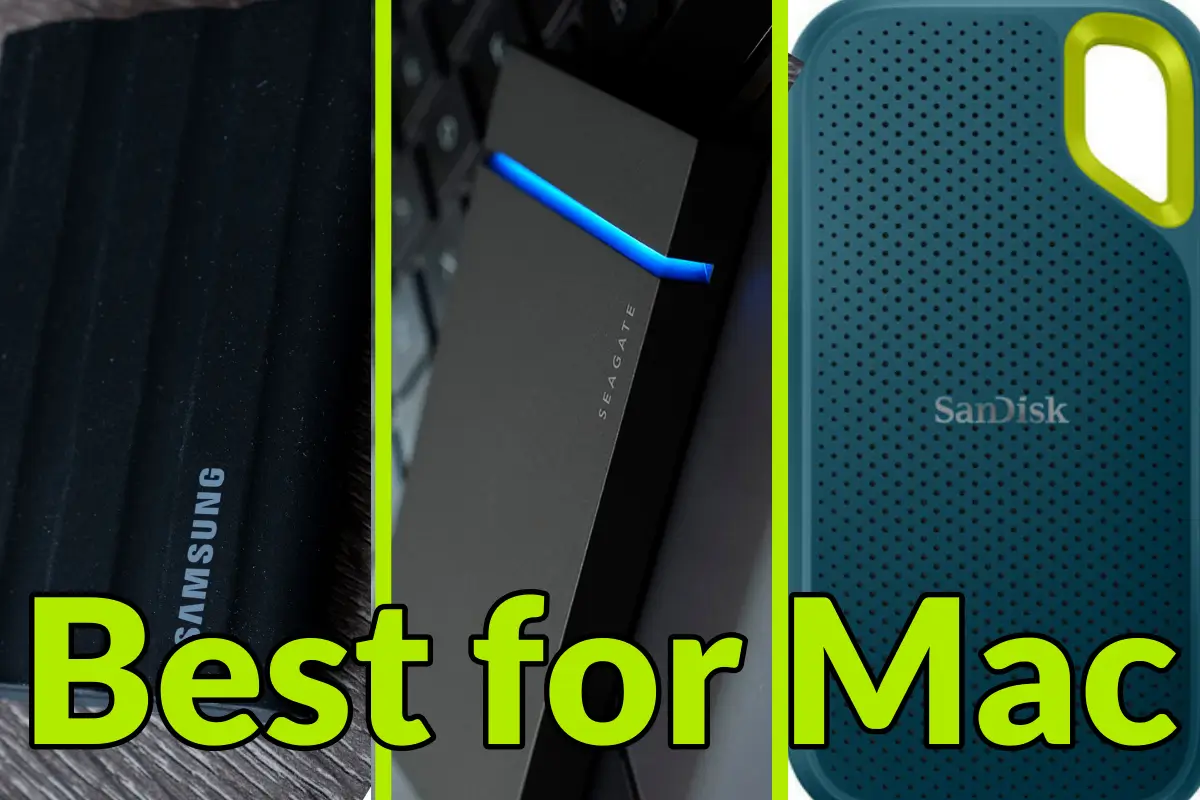In today’s fast-paced digital world, Mac users demand top-tier performance, whether for professional video editing, gaming, or secure data storage.
A high-quality external SSD for Mac is essential for those who need lightning-fast speeds, ample storage, and seamless macOS compatibility.
Unlike traditional hard drives, SSDs offer superior speed, reliability, and portability, making them the perfect solution for content creators, professionals, and everyday users who want to expand their Mac’s capabilities.
But with so many options on the market, how do you find the best external SSD for Mac that fits your needs?
Whether you’re looking for blazing-fast Thunderbolt 3 speeds, a rugged SSD for travel, or a budget-friendly storage upgrade, this guide will help you discover the top external SSDs that offer the best balance of speed, durability, and macOS compatibility.
Keep reading to find out which SSD is the right choice for you!
What to Look for in the Best External SSD for Mac: A Buyer’s Guide
When choosing the best external SSD for Mac, it’s essential to consider key factors like speed, storage capacity, compatibility, and durability.
Not all SSDs are created equal, and picking the right one depends on your specific needs—whether you’re a video editor needing ultra-fast data transfer speeds, a photographer storing massive RAW files, or simply someone looking to expand their Mac’s storage without sacrificing performance.
Below, we break down the most important features to consider before making your purchase.
1. Speed & Performance: How Fast Do You Need?
Speed is one of the biggest advantages of an external SSD over a traditional HDD.
If you’re working with large video files, 3D rendering, or high-resolution images, you’ll need high read/write speeds to ensure a smooth workflow without lag.
- SATA SSDs: Typically offer 400–600 MB/s speeds, suitable for basic storage and backups.
- NVMe SSDs: Provide speeds up to 3,000–7,000 MB/s, ideal for professionals who need ultra-fast data access.
- Thunderbolt 3 SSDs: Deliver the highest speeds, making them the best choice for power users and creatives.
For most Mac users, an NVMe-based SSD with USB-C or Thunderbolt 3 support offers the best balance of speed and affordability.
2. Storage Capacity: How Much Space Is Enough?
Choosing the right storage capacity depends on how much data you need to store.
- 500GB – Great for light users who need extra space for documents and apps.
- 1TB – A solid choice for everyday users who store media, photos, and projects.
- 2TB – Perfect for professionals working with large files, like video editors.
- 4TB+ – Ideal for heavy users and those needing long-term storage solutions.
For Mac users working with 4K video, high-resolution images, or large applications, opting for at least 1TB or 2TB ensures smooth performance without constantly managing storage.
3. Mac Compatibility: Will It Work Out of the Box?
Not all external SSDs are Mac-compatible right away, so it’s crucial to check for:
- APFS & HFS+ Support: macOS prefers APFS (Apple File System) for modern Macs and HFS+ for older versions. Some SSDs come pre-formatted for Windows, requiring reformatting.
- exFAT Support: If you need cross-compatibility between Mac and Windows, exFAT is the best format since it works on both without restrictions.
- Plug-and-Play Functionality: Some SSDs are Mac-ready out of the box, while others require manual formatting before first use.
Choosing an external SSD specifically designed for macOS ensures full compatibility and optimal performance.
4. Connectivity & Ports: USB-C vs. Thunderbolt 3
Your Mac’s port options determine which SSDs you can use without additional adapters.
- USB-C (USB 3.2 Gen 2): The most common and affordable option, offering speeds up to 10Gbps.
- Thunderbolt 3/4: Provides 40Gbps speeds, perfect for high-end professionals and creatives.
- USB-A (Older Macs): Requires an adapter or dock if your SSD only has USB-C.
If you own a MacBook Pro or MacBook Air with Thunderbolt 3 or 4 ports, getting an SSD with Thunderbolt support will maximize performance.
5. Durability & Design: Portability Matters
Depending on your usage, the build quality and durability of your external SSD can be a crucial factor.
- Slim & Lightweight: Ideal for everyday portability and office use.
- Rugged & Shockproof: Designed for travelers, photographers, and field professionals who need dust, water, and impact resistance.
- Heat Management: Some SSDs feature built-in cooling technology to prevent overheating and maintain performance over long sessions.
If you’re frequently on the move or working in harsh environments, investing in a rugged external SSD with military-grade durability is a smart choice.
Read also: How to build a PC: A step-by-step guide for beginners.
Choosing the Best External SSD for Mac
Finding the right external SSD for your Mac depends on how you use your device.
Whether you need lightning-fast transfer speeds for professional editing, reliable storage for everyday use, or a rugged drive for travel, considering these key factors will help you make an informed decision.
By focusing on speed, storage, compatibility, connectivity, and durability, you can ensure that your new external SSD enhances your Mac experience without bottlenecks.
Ready to upgrade your storage?
Let’s dive into the top 10 best external SSDs for Mac!
Top 10 Best External SSDs for Mac: Speed, Storage & Reliability
Finding the best external SSD for Mac can be overwhelming, especially with so many options on the market.
Whether you need lightning-fast speeds for video editing, reliable storage for gaming, or just extra space for everyday use, the right SSD can significantly enhance your Mac’s performance.
Below, we’ve compiled a list of the top 10 external SSDs for Mac, considering speed, storage capacity, connectivity, durability, and overall value.
Let’s dive in!
1. Samsung T7 Shield – Rugged, Fast & Reliable
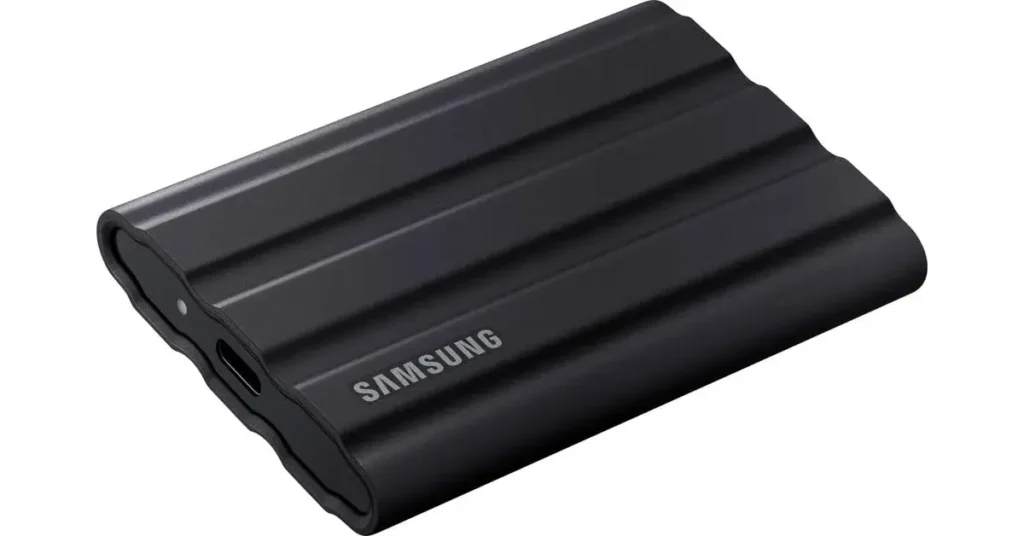
💾 Storage Options: 500GB, 1TB, 2TB
⚡ Speed: Up to 1,050 MB/s
🔌 Connectivity: USB-C (USB 3.2 Gen 2)
The Samsung T7 Shield is one of the best external SSDs for Mac users looking for durability and speed.
It features military-grade drop resistance and an IP65 rating, making it dustproof and water-resistant.
The AES 256-bit encryption also keeps your files secure.
✅ Pros: Fast, durable, secure encryption
❌ Cons: No Thunderbolt support
🎯 Best for: Creators, photographers, travelers
2. SanDisk Extreme Portable SSD V2 – Compact & High Performance
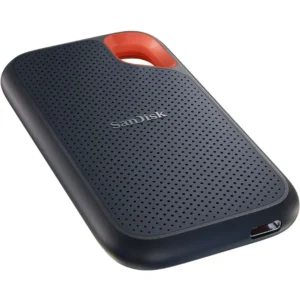
💾 Storage Options: 500GB, 1TB, 2TB, 4TB
⚡ Speed: Up to 1,050 MB/s (read), 1,000 MB/s (write)
🔌 Connectivity: USB-C (USB 3.2 Gen 2)
This pocket-sized SSD is ideal for on-the-go Mac users. It’s built with shock-resistant materials and features password protection.
The small form factor doesn’t compromise performance—this SSD is fast enough for video editing and gaming.
✅ Pros: Compact, durable, great for travel
❌ Cons: Slightly expensive compared to similar models
🎯 Best for: Mobile professionals, gamers, photographers
3. Crucial X8 – Affordable & High-Speed
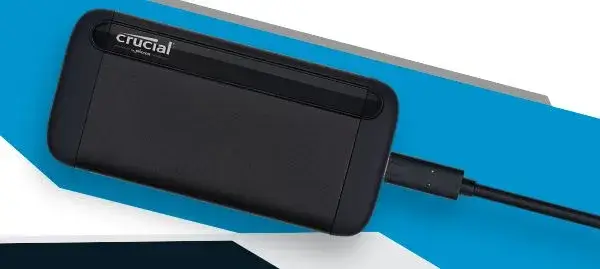
💾 Storage Options: 500GB, 1TB, 2TB
⚡ Speed: Up to 1,050 MB/s
🔌 Connectivity: USB-C (USB 3.2 Gen 2)
If you’re looking for a budget-friendly SSD with excellent performance, the Crucial X8 is a great choice.
It’s fast, sleek, and highly compatible with macOS devices, making it one of the best value-for-money SSDs available.
✅ Pros: Affordable, sleek aluminum design, reliable speed
❌ Cons: Not as rugged as competitors
🎯 Best for: Budget-conscious Mac users
4. WD My Passport SSD – A Balance of Speed & Storage
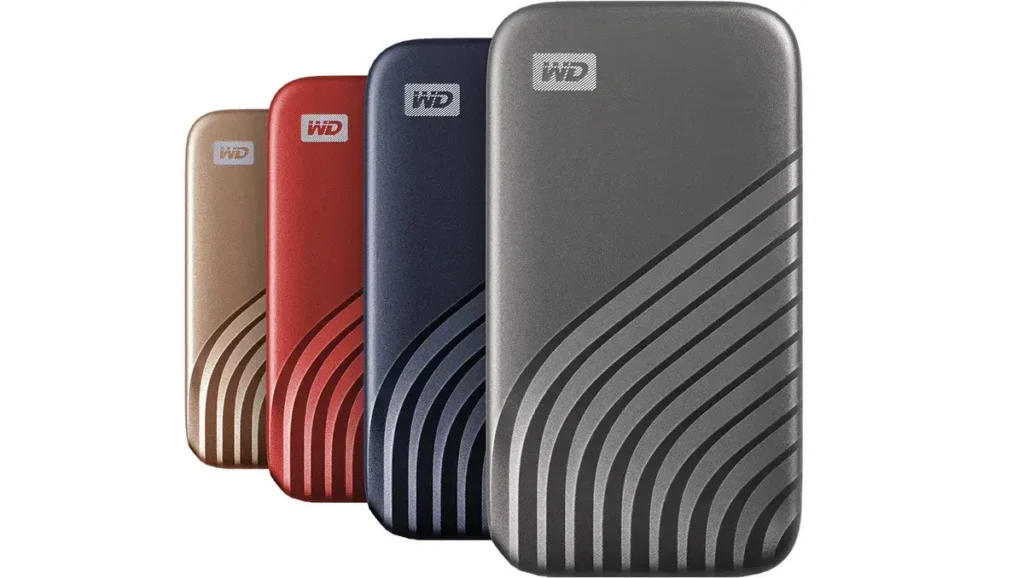
💾 Storage Options: 500GB, 1TB, 2TB, 4TB
⚡ Speed: Up to 1,050 MB/s
🔌 Connectivity: USB-C (USB 3.2 Gen 2)
Western Digital’s My Passport SSD is a great all-around option, offering good speeds and security features like 256-bit AES hardware encryption.
It’s not as rugged as some other SSDs but provides solid performance for everyday users.
✅ Pros: Affordable, good security features
❌ Cons: Not as durable as LaCie or Samsung T7
🎯 Best for: General users, backup storage
5. LaCie Rugged SSD – Built for Creators & Professionals

💾 Storage Options: 500GB, 1TB, 2TB, 4TB
⚡ Speed: Up to 1,050 MB/s
🔌 Connectivity: USB-C & Thunderbolt 3
For Mac users working in extreme environments, the LaCie Rugged SSD is a top pick.
It has drop, crush, and water resistance, making it ideal for field photographers and videographers.
The Thunderbolt 3 support ensures maximum transfer speeds for professionals.
✅ Pros: Rugged design, excellent compatibility, high-speed
❌ Cons: Bulkier than competitors
🎯 Best for: Filmmakers, photographers, travelers
6. Seagate FireCuda Gaming SSD – Perfect for Mac Gamers
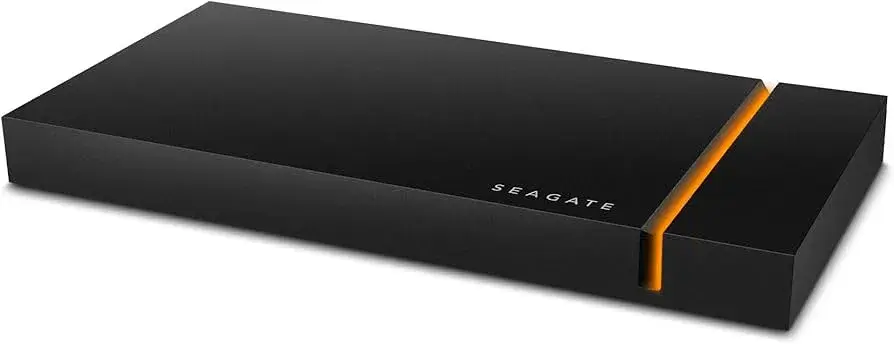
💾 Storage Options: 500GB, 1TB, 2TB
⚡ Speed: Up to 2,000 MB/s
🔌 Connectivity: USB-C (USB 3.2 Gen 2×2)
The Seagate FireCuda Gaming SSD is designed for gamers, delivering ultra-fast speeds and low latency.
It works flawlessly with macOS gaming setups and has an RGB lighting system for aesthetics.
✅ Pros: Super-fast, gaming-focused, stylish design
❌ Cons: RGB lighting isn’t customizable on Mac
🎯 Best for: Mac gamers, streamers
7. Glyph Atom SSD – Mac-Focused & Sleek
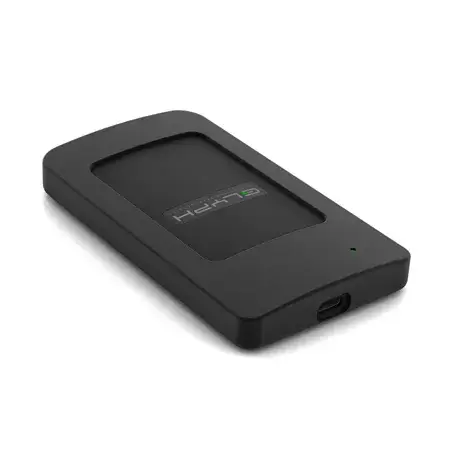
💾 Storage Options: 500GB, 1TB, 2TB
⚡ Speed: Up to 1,000 MB/s
🔌 Connectivity: USB-C (USB 3.2 Gen 2)
The Glyph Atom SSD is specifically designed for Mac users, offering great speed and seamless macOS compatibility.
It has a rugged, heat-resistant aluminum casing, making it both durable and stylish.
✅ Pros: Mac-optimized, strong build quality
❌ Cons: More expensive than competitors
🎯 Best for: Mac-exclusive users, professionals
8. Sabrent Rocket Nano – Ultra-Portable & High-Speed

💾 Storage Options: 512GB, 1TB, 2TB
⚡ Speed: Up to 1,000 MB/s
🔌 Connectivity: USB-C (USB 3.2 Gen 2)
For those looking for a tiny yet powerful SSD, the Sabrent Rocket Nano is an excellent choice.
It’s ultra-portable and still delivers fast speeds for Mac users.
✅ Pros: Small and lightweight, great performance
❌ Cons: Can heat up under heavy use
🎯 Best for: Travelers, minimalists
9. OWC Envoy Pro FX – Premium Thunderbolt 3 Performance
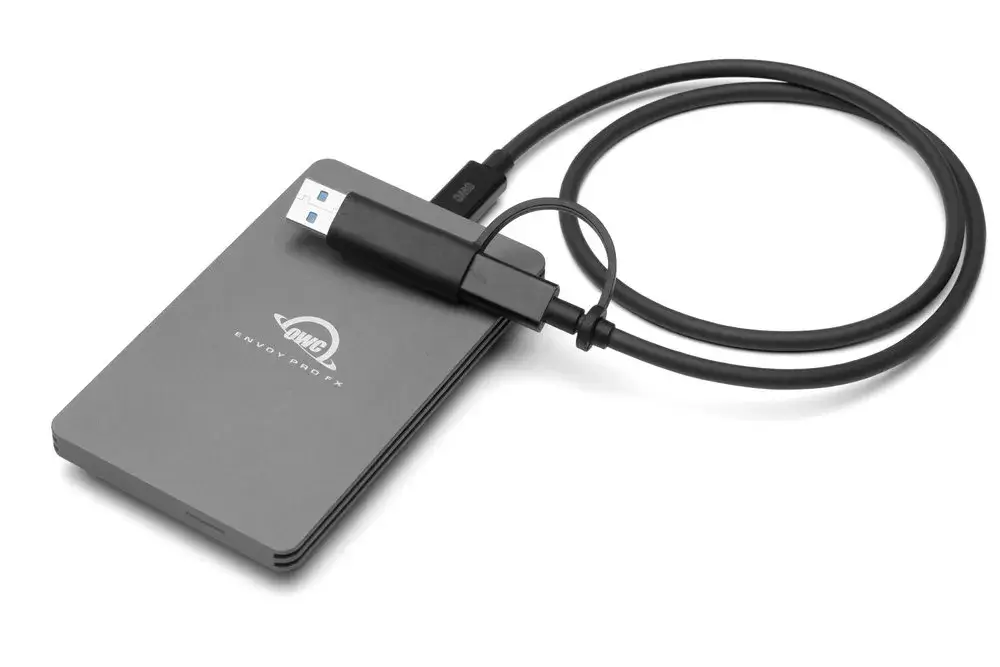
💾 Storage Options: 500GB, 1TB, 2TB, 4TB
⚡ Speed: Up to 2,800 MB/s
🔌 Connectivity: Thunderbolt 3 & USB-C
If you need high-end speeds for professional Mac work, the OWC Envoy Pro FX is one of the fastest external SSDs available.
It’s perfect for video editors and creatives using Final Cut Pro or Adobe Premiere.
✅ Pros: Blazing-fast speeds, Thunderbolt 3 support
❌ Cons: Expensive
🎯 Best for: Professional editors, creatives
10. Kingston XS2000 – Budget-Friendly Yet Powerful
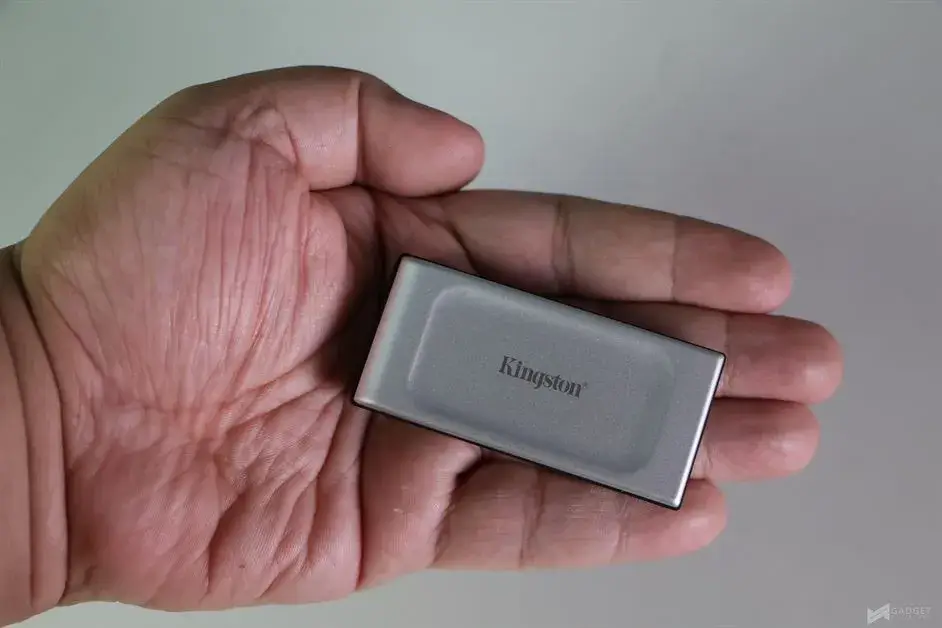
💾 Storage Options: 500GB, 1TB, 2TB
⚡ Speed: Up to 2,000 MB/s
🔌 Connectivity: USB-C (USB 3.2 Gen 2×2)
For a budget-friendly option with high-speed performance, the Kingston XS2000 is an excellent choice.
It’s compact, lightweight, and offers solid speeds for everyday use.
✅ Pros: Affordable, fast, portable
❌ Cons: Not as durable as premium models
🎯 Best for: Budget-conscious users
Read also: How does artificial intelligence impact our daily lives?
Which External SSD is Best for You? Find the Perfect Match for Your Mac Needs
Choosing the best external SSD for Mac depends entirely on how you plan to use it.
Whether you’re a video editor handling 4K footage, a gamer needing lightning-fast load times, or just someone looking for reliable storage on the go, there’s an SSD that fits your needs.
Below, we break down the top picks based on specific use cases to help you find the perfect match.
For Video Editors: LaCie Rugged SSD or OWC Envoy Pro FX 🎬

If you’re working with high-resolution video editing in Final Cut Pro or Adobe Premiere, you need an SSD that offers top-tier speeds, seamless macOS compatibility, and reliability under heavy workloads.
🔥 LaCie Rugged SSD – Built for On-the-Go Creators
✅ Why it’s great:
- Rugged, water-resistant, and shockproof, perfect for fieldwork.
- USB-C & Thunderbolt 3 support for maximum compatibility.
- Speeds up to 1,050 MB/s, handling large video files with ease.
🚀 OWC Envoy Pro FX – Premium Performance for Professionals
✅ Why it’s great:
- Blazing-fast speeds up to 2,800 MB/s via Thunderbolt 3.
- Aluminum casing for heat dissipation, ensuring stable performance.
- Perfect for MacBook Pro users working on demanding projects.
🔎 Best choice?
If you work in rugged conditions or need a travel-friendly drive, go for the LaCie Rugged SSD.
If you prioritize speed and Thunderbolt 3 support, the OWC Envoy Pro FX is unbeatable.
For Gamers: Seagate FireCuda Gaming SSD or Samsung T7 Shield 🎮
Mac gaming has evolved, and if you’re loading massive game files or streaming, a high-speed SSD can drastically improve performance.
These SSDs offer low-latency gaming experiences and rapid load times.
🔥 Seagate FireCuda Gaming SSD – Built for Mac Gamers
✅ Why it’s great:
- Speeds up to 2,000 MB/s for ultra-fast load times.
- USB-C (USB 3.2 Gen 2×2) for low-latency performance.
- RGB lighting (though limited for macOS) adds a gaming aesthetic.
⚡ Samsung T7 Shield – Durable & Speedy for Gaming on the Go
✅ Why it’s great:
- Speeds up to 1,050 MB/s for quick game launches.
- Shock-resistant and IP65-rated for dust and water protection.
- Small, lightweight design—perfect for gamers who travel.
🔎 Best choice?
If you want extreme gaming speeds, go with the Seagate FireCuda Gaming SSD.
If you need a compact, rugged SSD for gaming on the move, the Samsung T7 Shield is ideal.
For General Use: WD My Passport SSD or Crucial X8 💻
If you need an external SSD for everyday Mac tasks—storing files, transferring media, or backing up data—you want something fast, reliable, and affordable.
💾 WD My Passport SSD – Balanced Performance & Security
✅ Why it’s great:
- Speeds up to 1,050 MB/s for quick file access.
- AES 256-bit hardware encryption for extra security.
- Multiple storage options (500GB, 1TB, 2TB, 4TB).
📂 Crucial X8 – Budget-Friendly High-Speed SSD
✅ Why it’s great:
- Affordable with speeds up to 1,050 MB/s.
- Durable aluminum design with shock resistance.
- Plug-and-play compatibility with macOS, Windows, and iPad Pro.
🔎 Best choice? If security and encryption are priorities, go with WD My Passport SSD.
If you want fast performance at a lower price, the Crucial X8 is a steal.
For Maximum Portability: Sabrent Rocket Nano or Kingston XS2000 ✈️
If you’re always on the move, you need an SSD that’s ultra-compact, lightweight, and travel-friendly, without compromising speed.
📏 Sabrent Rocket Nano – Tiny Yet Powerful
✅ Why it’s great:
- One of the smallest external SSDs available.
- Speeds up to 1,000 MB/s, perfect for fast transfers.
- Durable aluminum casing, fits in your pocket.
🔹 Kingston XS2000 – Budget-Friendly & Portable
✅ Why it’s great:
- Super-fast speeds up to 2,000 MB/s.
- IP55-rated for water and dust resistance.
- Smaller than a credit card, easy to carry anywhere.
🔎 Best choice?
If you want the smallest possible SSD, go for the Sabrent Rocket Nano.
If you need speed and portability at an affordable price, the Kingston XS2000 is an excellent option.
Final Verdict: Which SSD Should You Buy?
- 🎬 For video editing: LaCie Rugged SSD (for durability) or OWC Envoy Pro FX (for max speed).
- 🎮 For gaming: Seagate FireCuda Gaming SSD (for ultra-fast speeds) or Samsung T7 Shield (for durability).
- 💾 For general use: WD My Passport SSD (for security) or Crucial X8 (for affordability).
- ✈️ For portability: Sabrent Rocket Nano (for ultra-small size) or Kingston XS2000 (for balanced performance).
No matter which external SSD for Mac you choose, investing in high-speed, reliable storage will improve your workflow and daily experience.
Read also: The evolution of smartphones: from brick to ai.
How to Set Up an External SSD on Mac: The Ultimate Guide
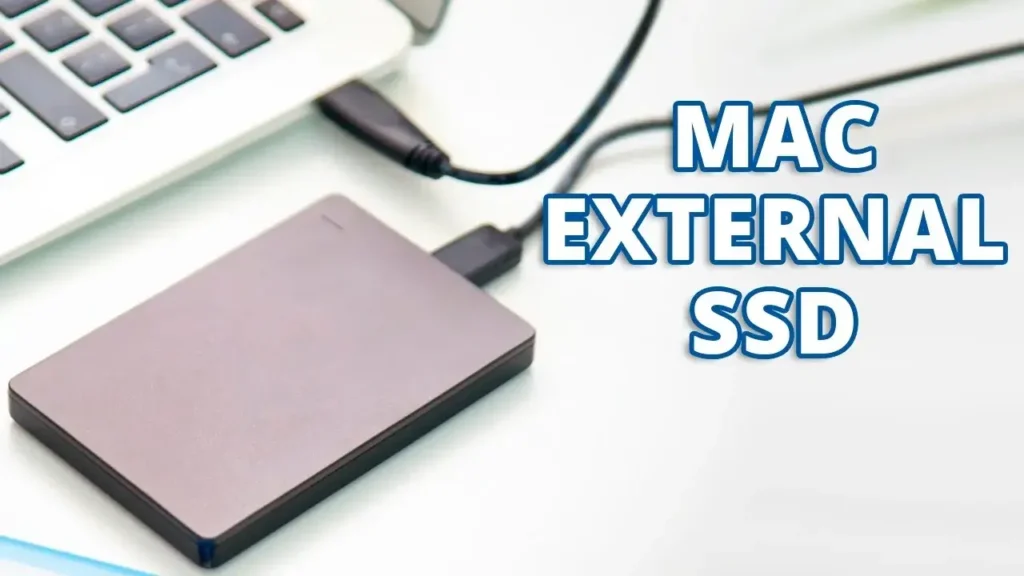
So, you’ve got a brand-new external SSD for your Mac, and now you’re ready to set it up.
Whether you’re using it for extra storage, Time Machine backups, or high-speed video editing, getting the best performance out of your SSD requires a few key steps.
In this guide, we’ll walk you through the entire setup process, from formatting the SSD correctly to optimizing macOS settings for peak performance. 🚀
1. Formatting the SSD: APFS, HFS+, or exFAT? 💾
Before using your external SSD on a Mac, you need to format it properly to ensure compatibility and optimal performance.
Here’s how different formats affect your SSD:
| File System | Best For | Compatible With | Pros | Cons |
|---|---|---|---|---|
| APFS (Apple File System) | Mac users, fast performance | macOS High Sierra (10.13) and later | Faster read/write speeds, optimized for SSDs, supports snapshots | Not compatible with Windows by default |
| HFS+ (Mac OS Extended) | Time Machine backups | All macOS versions | Reliable, works with older Macs | Slower than APFS, not optimized for SSDs |
| exFAT | Cross-platform use (Mac & Windows) | macOS & Windows | Works on both platforms, good for large files | Slightly slower performance than APFS |
How to Format Your External SSD on Mac
- Connect your SSD to your Mac via USB-C or Thunderbolt.
- Open Disk Utility (Finder > Applications > Utilities > Disk Utility).
- Select your SSD from the left sidebar.
- Click Erase at the top.
- Choose APFS (for macOS use) or exFAT (for Mac and Windows compatibility).
- Name your SSD and click Erase to format it.
- Once finished, your SSD is ready to use! 🎉
🔎 Which format should you choose?
- If you only use macOS, go with APFS for the best performance.
- If you need Windows compatibility, format your SSD as exFAT.
2. Enabling Time Machine for Automatic Backups 🔄
If you’re using your external SSD for backups, Time Machine is the best way to automatically protect your files.
It allows you to restore lost data, recover previous file versions, and keep your Mac safe from unexpected failures.
How to Set Up Time Machine on an External SSD
- Format your SSD as HFS+ (Mac OS Extended) if it’s not already formatted.
- Go to System Settings (macOS Ventura & later) or System Preferences (macOS Monterey & earlier).
- Click Time Machine > Add Backup Disk.
- Select your external SSD and confirm.
- Enable Automatic Backups and adjust settings if needed.
That’s it!
Time Machine will now automatically back up your Mac at regular intervals.
💡 Pro Tip: If you use your SSD for both backups and extra storage, partition it using Disk Utility to separate your files.
3. Optimizing Your External SSD for Maximum Performance 🚀
To make sure your SSD is running at peak speed and efficiency, here are a few macOS optimization tips:
✅ Enable TRIM for Better Longevity
TRIM helps maintain SSD speed and lifespan by clearing unused space efficiently.
- Open Terminal (Finder > Applications > Utilities > Terminal).
- Type:
sudo trimforce enable - Press Enter, then restart your Mac.
⚡ Use Thunderbolt 3 or USB-C for Faster Speeds
- Thunderbolt 3 SSDs (like OWC Envoy Pro FX) deliver speeds up to 2,800 MB/s.
- USB-C SSDs (like Samsung T7) offer up to 1,050 MB/s, which is still fast.
- Avoid USB 2.0 and older cables—they slow down performance significantly.
🚀 Turn Off macOS Spotlight Indexing for Faster SSD Access
Spotlight indexing constantly scans your SSD, which can slow it down.
To disable it:
- Open System Settings > Siri & Spotlight.
- Click Spotlight Privacy and add your external SSD to the exclusion list.
Get the Best Performance from Your External SSD on Mac
Setting up an external SSD on Mac isn’t just about plugging it in—you need to format it correctly, enable backups, and optimize performance for the best experience.
🔹 For macOS-only users, choose APFS formatting.
🔹 For Time Machine backups, go with HFS+ (Mac OS Extended).
🔹 For Mac & Windows compatibility, format as exFAT.
🔹 For maximum speed, use Thunderbolt 3 or USB-C connections.
🔹 For long-term SSD health, enable TRIM and disable Spotlight indexing.
By following these steps, you’ll unlock the full potential of your external SSD and keep your Mac running at lightning speed.
Final Thoughts: Boost Your Mac’s Storage & Speed 🚀
Choosing the best external SSD for Mac is more than just about adding extra storage—it’s about speed, reliability, and future-proofing your workflow.
Whether you’re a video editor, gamer, content creator, or just someone who needs more space, an SSD can completely transform your Mac experience.
🔹 Recap: Why an External SSD is a Game-Changer for Mac Users
Unlike traditional hard drives, SSDs are significantly faster, more durable, and built to handle intensive tasks like 4K video editing, gaming, and running macOS apps directly from the drive.
But to get the best performance, you need to choose the right SSD that matches your needs.
🛠 Recommended SSDs Based on Your Needs
💾 For Creative Professionals (video editors, photographers, 3D artists):
- OWC Envoy Pro FX (Best Thunderbolt SSD for extreme speeds)
- LaCie Rugged SSD (Durable & reliable for on-the-go creators)
🎮 For Gamers & High-Speed Performance:
- Seagate FireCuda Gaming SSD (Optimized for gaming, RGB lighting included)
- Samsung T7 Shield (Rugged & fast for seamless gameplay)
📂 For Everyday Use & General Storage:
- WD My Passport SSD (Great balance of storage, speed & price)
- Crucial X8 (Affordable & reliable for casual users)
🌎 For Maximum Portability & Travel:
- Sabrent Rocket Nano (Ultra-compact & fast)
- Kingston XS2000 (Lightweight but powerful)
🔥 Upgrade Your Mac Experience Today!
An external SSD isn’t just an accessory—it’s a powerful upgrade that can make your Mac run faster, handle bigger projects, and store more data without slowing down.
So, what are you waiting for?
Upgrade your Mac’s storage and speed today with the best Mac-compatible SSD for your needs. 🚀
Read also: How to build a PC: A step-by-step guide for beginners.
Follow our social media to receive content as soon as it is released.👇

